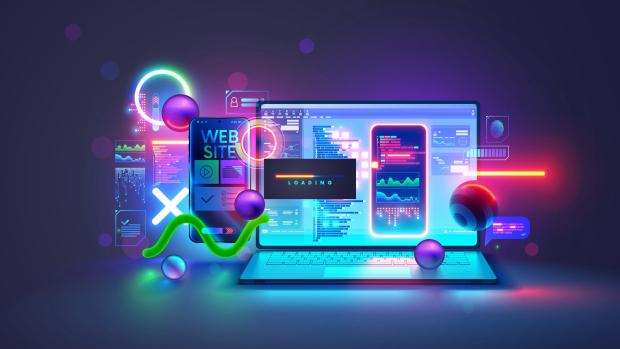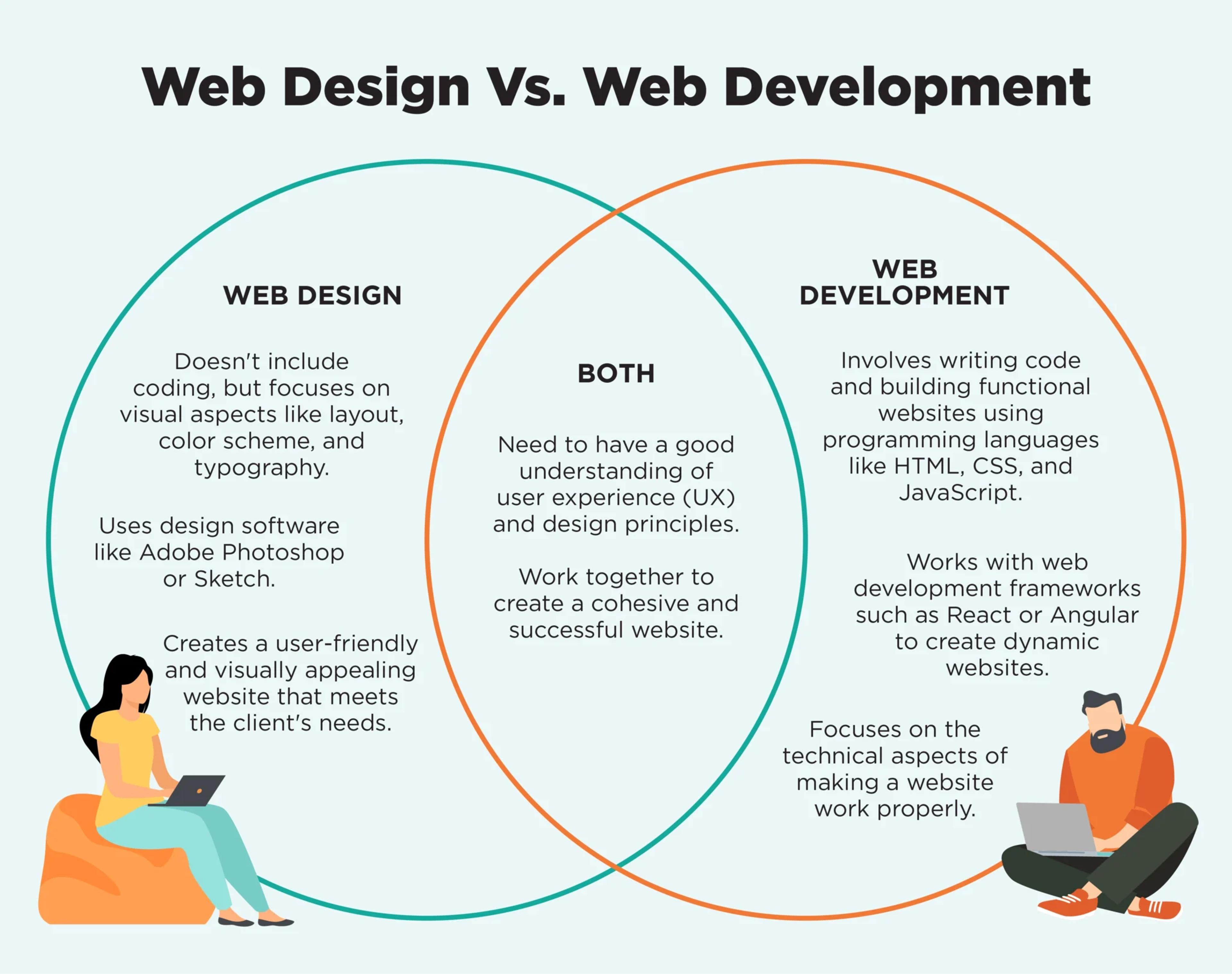Website design principles that secure accessibility and readability
Finding the Uses of Web Design for Enhancing Customer Experience
Web style greatly affects individual experience throughout digital systems. By focusing on individual demands, designers produce internet sites that are not only visually enticing but obtainable and likewise functional. Crucial element such as receptive style and intuitive navigating play essential roles in enhancing functionality. The obstacle lies in comprehending just how these components connect to satisfy advancing user expectations. The expedition of these variables reveals insights that could change digital engagement.
Understanding User Demands and Expectations
Exactly how can Web developers efficiently align their creations with customer requirements and assumptions? To accomplish this, developers have to engage in extensive user research study to capture the choices, behaviors, and pain points of their target market. Utilizing methods such as surveys, interviews, and functionality screening, designers gather important insights that guide their decision-making procedure.
Creating customer personalities can better help in visualizing different customer sections, making certain that layout options reverberate with genuine individuals. Furthermore, developers need to focus on intuitive navigating and clear contact us to action, which help with seamless interactions.
The Relevance of Responsive Layout
As individuals increasingly gain access to web sites on a variety of tools, responsive style has actually become important for developing a positive customer experience. This technique permits website to adapt perfectly to various display sizes, making sure that content is quickly legible and accessible, despite whether a user is on a tablet computer, smartphone, or desktop .
Receptive design improves functionality by providing a regular experience, reducing the requirement for too much scrolling or zooming. In addition, online search engine favor receptive websites, which can boost a website's visibility and reach. This design technique likewise enhances advancement efforts, as it gets rid of the requirement for multiple versions of a website customized to particular tools.
Including receptive style not just fulfills individual assumptions but also aligns with modern Web criteria, promoting interaction and complete satisfaction. Eventually, it indicates a commitment to access and inclusivity, pivotal elements for any effective online presence.
Creating Instinctive Navigating
An effective website design not just encompasses receptive designs however additionally prioritizes user-friendly navigating, which is vital for leading customers via a website perfectly. Instinctive navigation assurances that users can easily find information without unneeded effort. Secret components consist of a clear menu framework, logical categorization of material, and recognizable symbols or tags.
Consistency in navigating placement throughout different pages fosters experience, boosting user comfort. Making use of breadcrumb trails allows individuals to track their area within the website, aiding in backtracking and expedition. Additionally, optimizing navigating for mobile tools is essential, as lots of customers access internet sites via tablets and smart devices.
Including a search bar can furthermore improve the customer experience, enabling quick access to certain web content. Generally, instinctive navigation decreases stress, motivates longer website visits, and ultimately causes higher individual fulfillment and interaction. By concentrating on navigation layout, Web designers can greatly enhance the general customer experience.
Utilizing Aesthetic Power Structure Efficiently
Effective website design depends upon the strategic use aesthetic pecking order, making certain that customers can easily browse material and understand the most important details at a glance. By focusing on elements based upon their relevance, designers can guide customers' interest toward crucial areas, such as headings, calls-to-action, and vital images.
Strategies such as dimension, color, placement, and contrast play vital duties in establishing this power structure. For circumstances, larger message commonly represents better value, while contrasting colors can accentuate key actions. Additionally, consistent placement and spacing help produce an arranged format, making it easier for individuals to refine information swiftly.
Moreover, integrating images purposefully can enhance understanding and retention of material. When made use of effectively, a distinct aesthetic hierarchy not only boosts functionality but also improves the general customer experience, allowing users to involve meaningfully with the website's purposes.
Enhancing Readability and Access
Visual power structure substantially influences how customers interact with a site, but just as important is ensuring that web content remains understandable and obtainable to all audiences. Effective website design uses clear typography, consisting of proper font style sizes, line spacing, and contrast to enhance readability. Making use of high-contrast color design can aid those with aesthetic problems, while larger text sizes benefit customers with reviewing problems. Additionally, including alt text for images warranties that people utilizing screen readers can access essential info.
Developers must additionally consider the design and framework of material, making use of headings and bullet points to separate large blocks of message. This not only help skimming however also helps customers with cognitive disabilities. Eventually, prioritizing readability and accessibility promotes a comprehensive setting, allowing diverse audiences to engage totally with the site's web content (website design). By attending to these components, Web designers can significantly improve the general customer experience
Including Involving Aesthetic Components
Including appealing visual elements is crucial for boosting customer experience in website design. Color psychology plays a substantial role in affecting customers' emotions and habits, while interactive graphics can record interest and urge expedition. Together, these elements produce a more vibrant and attractive on the internet environment.
Value of Shade Psychology
The value of color psychology in Web design can not be overstated, as it plays a necessary function fit user perceptions and actions. Colors evoke feelings and can affect just how customers engage with a website. Blue typically shares trust and professionalism and reliability, making it a prominent choice for economic establishments. Alternatively, red can cause necessity and excitement, typically made use of in sales promos. Comprehending the emotional results of color makes it possible for developers to produce a cohesive visual experience that resonates with users. Furthermore, regular color design enhance brand name identification and acknowledgment, making sure customers link particular shades with certain brands. Eventually, thoughtful application of color psychology can considerably improve user engagement and contentment, making it a fundamental facet of efficient website design.
Making Use Of Interactive Graphics
Involving customers via interactive graphics can greatly boost their overall experience on a web site. These aspects, such as computer animations, infographics, and clickable visuals, foster a much deeper connection between individuals and the web content. By encouraging exploration and engagement, interactive graphics can make intricate information a lot more absorbable and preserve users' interest much longer. In addition, they offer a possibility Extra resources for individuals to connect with the site in a purposeful way, bring about enhanced satisfaction and a greater chance of returning. Nevertheless, it is necessary to balance interactivity with use; excessively complex graphics might puzzle users. Effectively executed, interactive graphics can transform a passive viewing experience right into an interesting journey, ultimately adding to boosted user experience and website performance.
Continuous Examining and Enhancement Methods
Continuous testing and improvement methods work as crucial parts in maximizing website design for individual experience. By carrying out iterative testing, designers can collect real-time feedback on user interactions, enabling them to recognize discomfort factors and areas for improvement - website design. A/B screening, usability browse around this web-site testing, and heat mapping work approaches that provide understandings right into customer behavior, enabling enlightened layout choices
Moreover, these techniques motivate a society of ongoing improvement, as opposed to a single launch. Web developers can make use of analytics tools to keep an eye on efficiency metrics, such as bounce rates and conversion prices, which assist necessary adjustments. Routine updates based upon individual responses not just boost performance however also foster customer satisfaction and loyalty.
Eventually, continuous screening and renovation develop a responsive website design environment where individual experience is prioritized, guaranteeing that the website develops alongside individual needs and technical innovations. This proactive method causes a much more efficient and appealing online presence.
Regularly Asked Inquiries
Just How Can Color Psychology Influence User Experience in Website Design?
Color psychology substantially influences customer experience in website design by directing and evoking feelings actions. Various shades can create organizations, improve readability, and impact customer interaction, ultimately shaping perceptions of a brand name or web site's performance.
What Role Does Typography Play in Customer Interaction?
Typography greatly affects customer engagement by boosting readability, establishing power structure, and communicating brand personality. Efficient font choices can capture attention, evoke feelings, and overview customers through material, eventually enhancing general interaction and satisfaction with the internet site.

Exactly How Do Cultural Distinctions Impact Website Design Preferences?
Social distinctions considerably affect Web layout preferences, affecting color selections, layout, imagery, and navigation designs. Recognizing these variations allows designers to produce more relatable and interesting experiences tailored to diverse individual backgrounds and assumptions.

What Devices Can Assist Test Customer Experience Efficiently?
Different tools, including Google Analytics, Hotjar, and UsabilityHub, effectively test individual experience. These systems supply insights right into individual actions, help with A/B screening, and collect comments, assisting developers make notified choices to enhance general use.
Exactly how Commonly Should a Website Be Revamped for Ideal User Experience?
A site click here for more must be upgraded every two to 3 years to keep optimal customer experience. Routine updates guarantee the layout stays contemporary, responsive, and lined up with progressing user needs and technological improvements, improving total involvement.
Creating customer identities can even more help in envisioning different customer segments, ensuring that layout selections resonate with genuine individuals. As customers progressively accessibility websites on a range of devices, responsive design has come to be crucial for producing a positive user experience. Including appealing visual components is necessary for boosting customer experience in Web layout. Eventually, continuous screening and renovation produce a receptive Web design environment where individual experience is prioritized, making certain that the website advances along with individual needs and technological innovations. Color psychology significantly influences customer experience in Web layout by evoking emotions and directing actions.